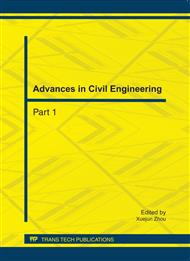p.3015
p.3026
p.3033
p.3039
p.3043
p.3047
p.3051
p.3057
p.3061
Review on the Research of Indoor Environment Quality and Building Energy Consumption
Abstract:
This study reviews some published literatures to survey the recent research on indoor environment quality and building energy consumption. The indoor environment quality is categorized and defined as different indices and variables. The building energy consumption can be determined by ventilation rates, thermal comfort, adaptive thermal comfort, neutral temperature, set-point temperature, indoor air quality, air velocity, and non-occupied hours. Various climates or regions such as subtropical climates in Hong Kong, Italy, three climatic zones in Greece, hot and dry climates in Africa, hot and humid climate in Thailand, are contained. The building types include office buildings, commercial buildings and school buildings, and the data can be obtained from a simulation model or the field database. It can be concluded that the indoor environment quality has a significant influence on the building energy consumption, and a validated thermal model is be a practical tool to investigate the effect of the indoor environmental parameters.
Info:
Periodical:
Pages:
3043-3046
Citation:
Online since:
September 2011
Authors:
Price:
Сopyright:
© 2011 Trans Tech Publications Ltd. All Rights Reserved
Share:
Citation:


